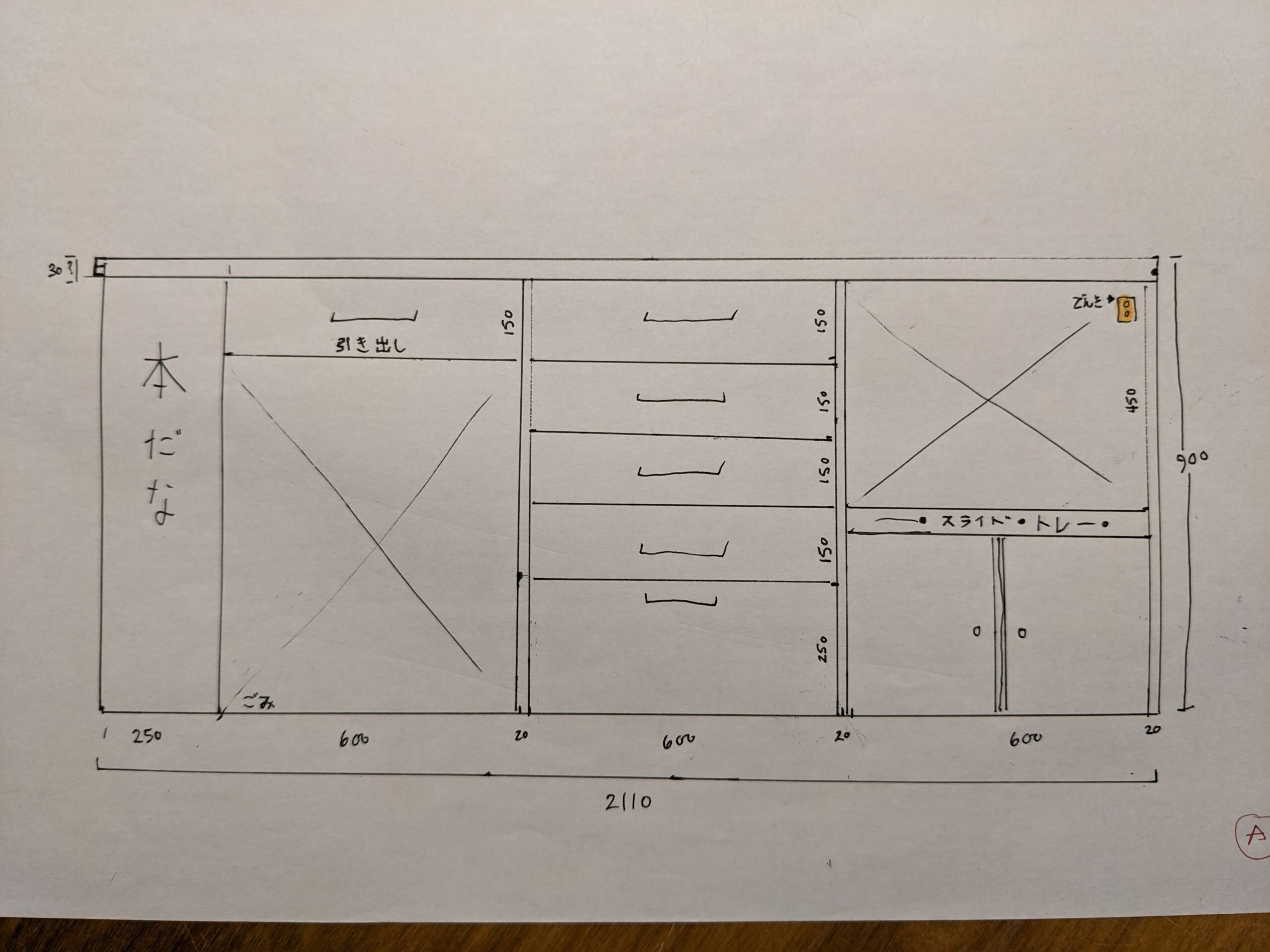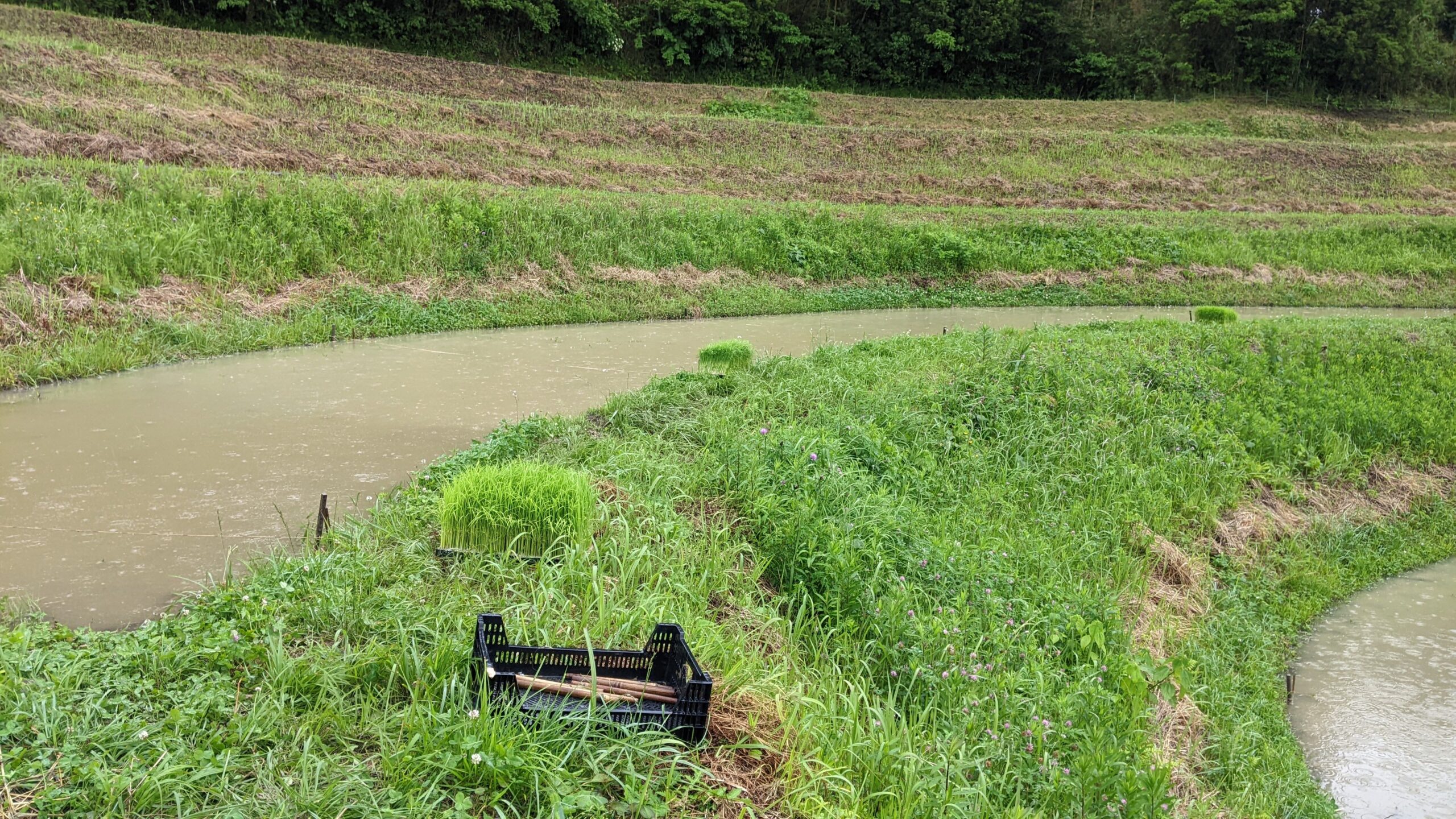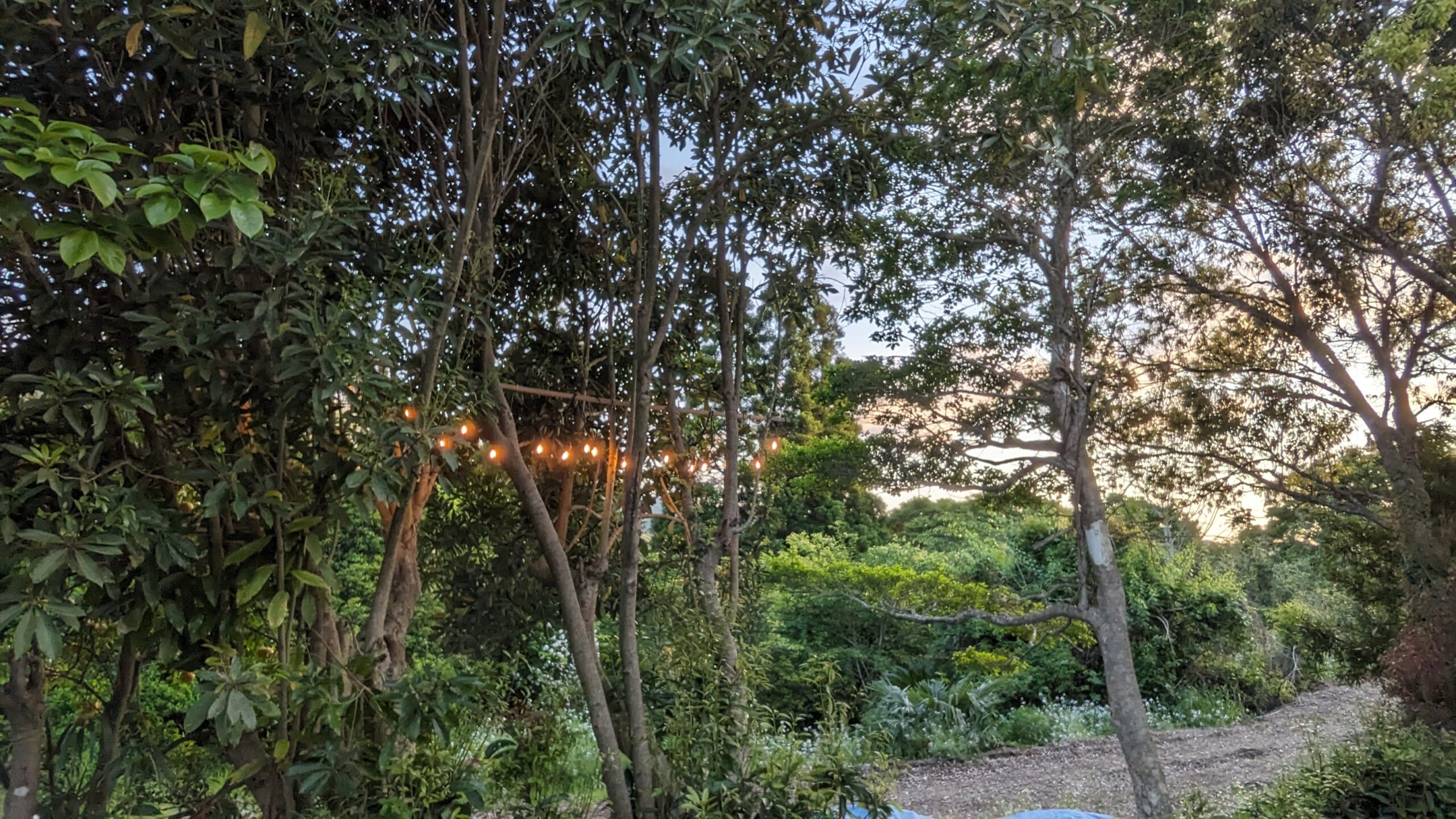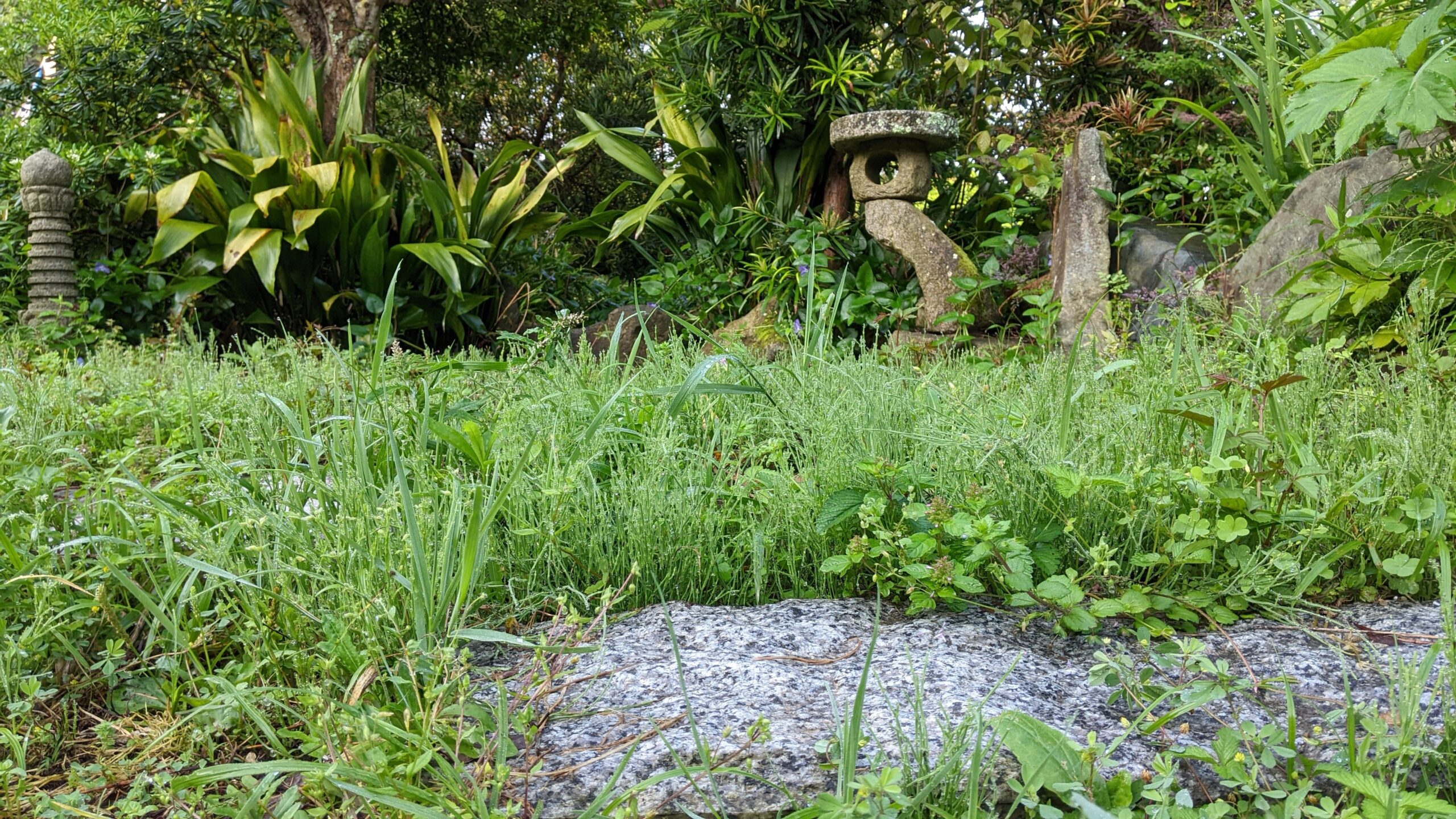One of the features that we have saved until the end of the project is the giant counter island between the kitchen and dining room. It’s been a concept in my head for quite a long time, but a big question mark about how we’d have it done.
This week, Sasaki-san and I sat down together several times to discuss the design, materials, and build options.
My first choice for countertop is Dekton, an engineered ceramic stone that is impervious to heat, stains, scratches. It’s a completely mysterious entity. How do you buy it? How do you work with it? The manufacturer doesn’t even publish prices. So at this point, Dekton wasn’t a great option logistically.
We worked our way through other options – big slab of cedar, stainless steel, Formica. None of them suited the way I see using this space. In the end, we lighted on butcher block, known in Japanese as shuseizai, 集成材.

When I firmly rejected the commonly used pine and cedar softwoods, Sasaki-san reached out to Yamashita Woody Interior Parts and brought me samples of hardwoods that they use to make shuseizai: oak, ash, rubber, and rosewood.
That rosewood (on the right above) is beautiful and so dense. Three times heavier than the oak. Just incredible. Also, I learned, toxic. Definitely a poor choice for a food prep surface. In fact all of these are bad for various reasons: rubber wood is chemically fumigated after being cut and will leach that chemical; oak and ash are both porous and prone to picking up bacteria and mold in wet environments like a kitchen.
Food safe butcher block comes from trees that produces fruit, nuts or other edible parts. Cherry, walnut, maple, birch, and beech are all fine. Yamashita offers birch カバ桜 and beech ブナ, so we’ll go with one of those.
For the cabinetry, we need an outsider’s help. Sasaki-san is confident about building non-sliding parts, but he doesn’t have experience with making drawers. I want drawers on the kitchen side of this beast. At this late point, finding a cabinet maker with capacity to do the work within a month is a fantasy.

I spent hours pouring over ready-made furniture catalogs and online shops. If Sasaki-san puts together the countertop and its supports, then I can slide a “kitchen wagon” under that and get the functionality that I require. But my searching didn’t turn up anything that really made me happy. For one, kitchen wagons are ugly and cheaply made. Also we’d have to sit our butcher block over the top of the kitchen wagon, which seems an excess of countertops.
So I opted for IKEA base cabinets. After rejecting IKEA from the kitchen earlier in the planning, I wasn’t expecting to return to it. Right now, it’s the best option: timely, affordable, and flexible configurations. Base cabinets don’t come with a countertop and I was able to choose a combination of drawers and parts that fit my use case. Colors are tricky, always. I considered grey, but Tod didn’t like the country kitchen styling (he was right) so I ended up with plain black and simple stainless handles.

The base cabinets will be delivered on Tuesday. I will put one of them together so Sasaki-san can figure out exactly how tall to make the vertical supports he is building. Steven will add an electrical outlet to the pull-out shelf cabinet. And when the countertop arrives in a few weeks, we can put it all together.
I am excited to see the result of our just in time, hybrid kitchen counter.






